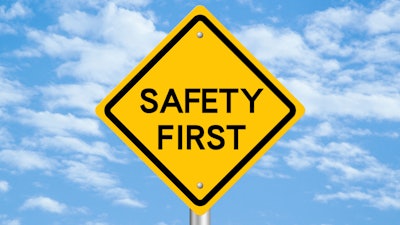
On July 11, 2014, a worker at Lloyd Industries' Montgomeryville, Pennsylvania plant suffered the amputation of three fingers after a machine without safety guards crushed his hand. The company, a leading manufacturer of fire dampers and HVAC products, fired him immediately after the incident.
Four months later, OSHA received a safety complaint from the injured employee and the agency opened an inspection. On Nov. 18, 2014, five days after it began, company owner William P. Lloyd fired a worker he was suspected to be a "rat" who had assisted the injured employee by providing him with pictures of the unguarded machine.
In fact, the employee had taken photographs of the unguarded machine that caused the amputation, other areas of the shop, and of employees operating unguarded machines. He shared those pictures with the injured man.
In May 11, 2015, the federal agency issued citations to the company with total penalties of $822,000. That day, Lloyd fired the plant's manager because he believed the manager had cooperated with OSHA and provided damaging information during the inspection. In response, the U.S. Department of Labor filed suit against Lloyd Industries Inc., and owner William P. Lloyd seeking to have the employees reinstated and compensated for lost wages and damages.
"Lloyd Industries has a long, unfortunate history of putting employees at risk and defying federal officials. Since 2000, approximately 40 serious injuries, including lacerations, crushed, fractured, dislocated and amputated fingers have been recorded," said Richard Mendelson, OSHA regional administrator in Philadelphia. "William P. Lloyd refuses to make his company safe. Whenever someone tries, they are fired."
The first employee filed an OSHA complaint, alleging Lloyd fired him in retaliation for assisting in the filing of the federal complaint. The plant manager also filed, alleging in his complaint that Lloyd fired him for his cooperation with OSHA. In its review, the agency found that the company violated the anti-discrimination provision of the Occupational Safety and Health Act, or Section 11(c), when it terminated the complainants because they had engaged in the protected activities under the Act.
To date, Lloyd Industries has failed to reinstate both workers, as well as compensate them for lost wages and other damages suffered as a result of the improper terminations.
Filed in the U.S. District Court for the Eastern District of Pennsylvania, the suit seeks to:
- Enjoin Lloyd Industries and William P. Lloyd from violating Section 11(c)(1) of the Act.
- Direct the defendants to reinstate both employees.
- Direct the defendants to compensate the complainants for lost wages and interest, punitive damages, emotional distress, pain and suffering resulting from their terminations.
- Direct the defendants to post notices at all of its work sites for 60 days stating that it will not discriminate or retaliate against employees involved in activities protected by Section 11 (c) of the Act.
The department's Regional Office of the Solicitor in Philadelphia is litigating the case.
William Lloyd founded Lloyd Industries in 1981. Based in Montgomeryville, the company manufactures fire dampers and HVAC products, which it distributes through contractors throughout the U.S. and Canada. Lloyd also has operations in Orange Park, Florida, and Kowloon, Honk Kong.
Employers are prohibited from retaliating against employees who raise various protected concerns or provide protected information to the employer or the government. Employees who believe that they have been retaliated against for engaging in protected conducted may file a complaint with the secretary of labor for an investigation by OSHA's Whistleblower Protection Program. More information is available online at http://www.whistleblower.gov.






















